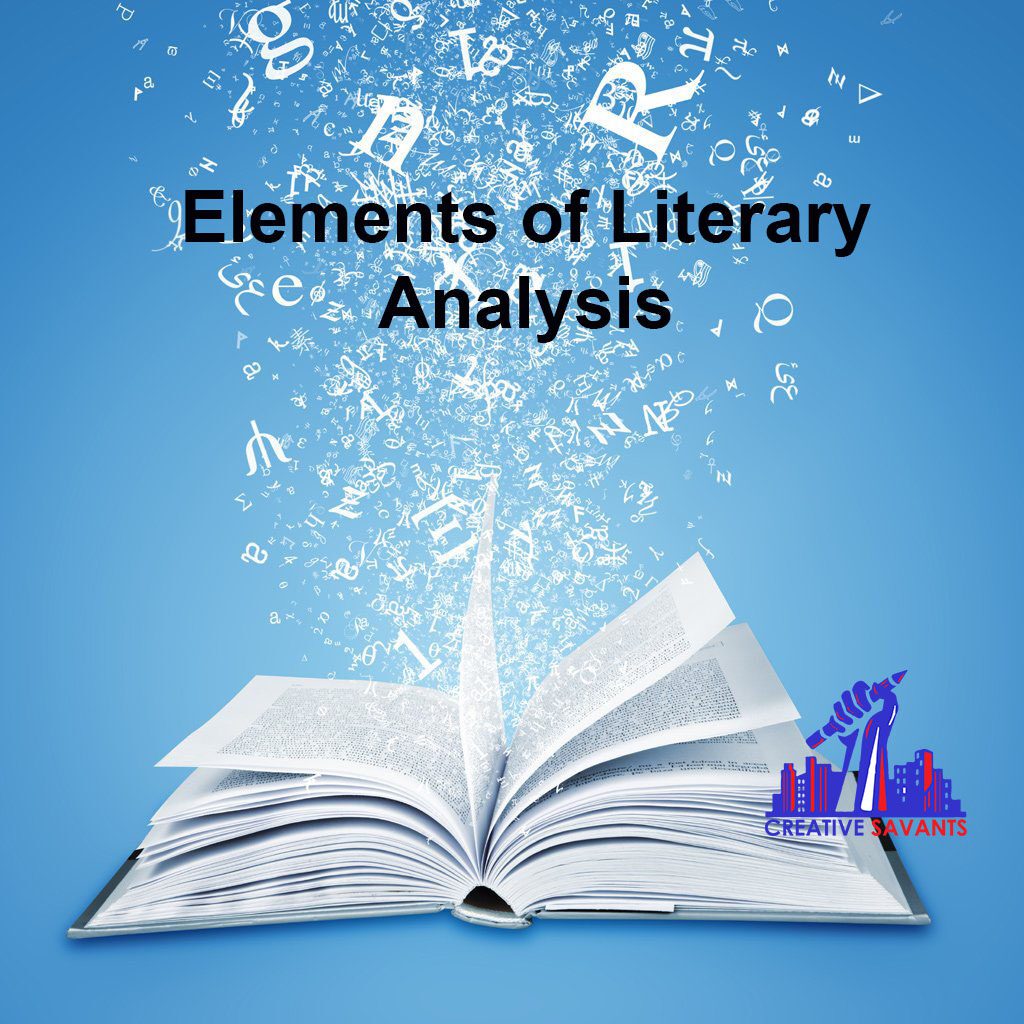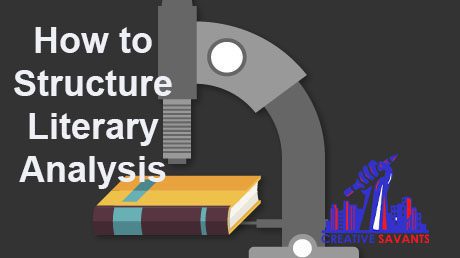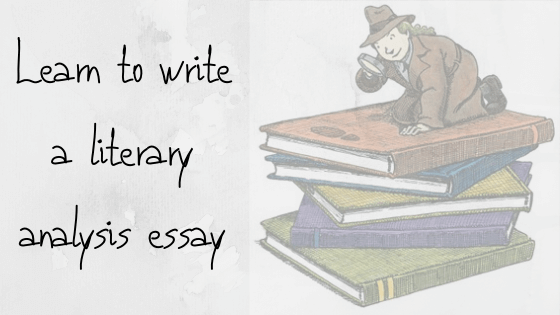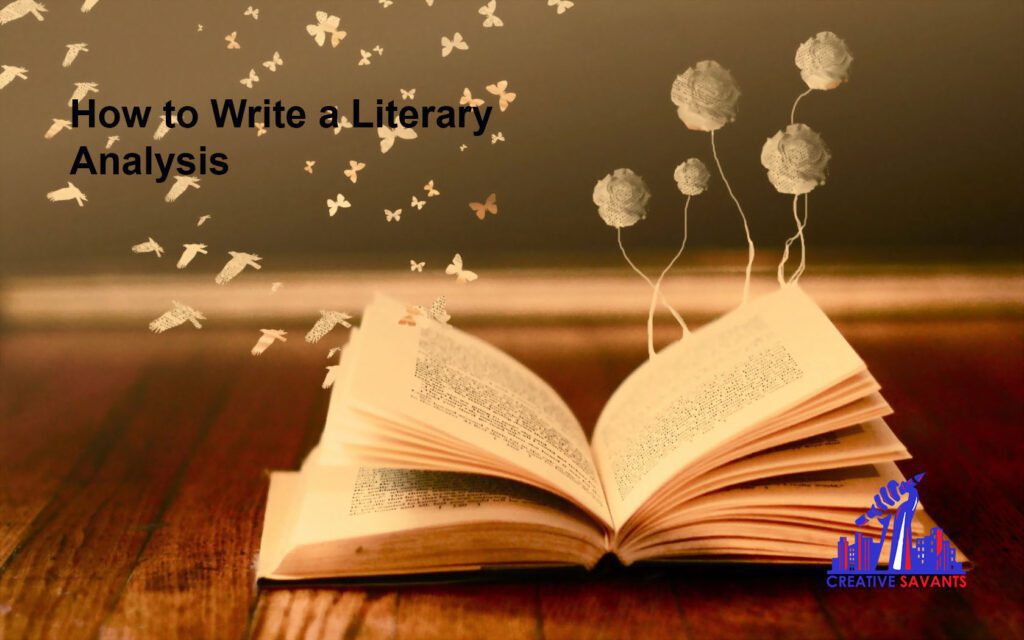Literary analysis allows the students to consider how and why a short poem, story, drama or a novel/book was written therefore, these are frequently assigned to them. You must bear in mind while writing that the author chooses specific choices in his work for a purpose. You must also be able to examine a piece of literature from your own perspective, but you also must call them out and attempt to explain why they were made. Stay tuned for additional information on how to create a literary analysis in this post.
Introduction to Literary Analysis or Literary Essay
To read for pleasure solely means to have fun. One purpose to read for pleasure maybe to learn about a fascinating period or location, simply to pass the time or just to escape into an intriguing narrative. Or perhaps you’re seeking for advice, motivation, or a window into your own life. There are as many viable methods to read a book as there are books on the planet.
However, you are expected to read in a unique way while reading a piece of literature for your English class. You are asked to do a literary analysis. Breaking something down into smaller components and then examining how those parts operate separately and collectively is the definition of analysis.
In a literary analysis essay, the question is not whether or not you liked a book or if you would suggest it to another reader. You might have written a book report when you were younger in which your instructor asked you to explain the plot of the book. A literary essay is not the same as that book report.
Some questions which come to mind while writing a college or high school literary essay are:
- How does it do what it does?
- How does this piece of literature truly work?
- Why did the author make the choices he or she did?
The Elements in Literary Analysis
Each piece of literature is composed of a number of different elements. These are the components of a literary analysis essay that must be discussed throughout your essay and used as evidence to back up your claims.
- Elements of story
- Elements of style
Elements of Story
What occurs, to whom it happens and where it happens are the ‘what’ elements of literary analysis.
Plot of the story
Create a timeline for all of the work’s events and actions.
Characters
Characters in a literary work who act and are acted upon. The protagonist is the main character in a story.
Setting
Setting of a story means when and where will the work be done? historical period, location, time of day, weather, economic conditions, and social mood are all elements of setting.
Conflict
The story’s fundamental conflict. In most situations, the protagonist desires something, while antagonists (opposite forces) obstruct the protagonist’s development.
Themes
The element of theme is the work’s core ideas or messages. These are usually abstract concepts about life in general, individuals or society. Many themes may be included in a work, some of which are in conflict with one another.
Narrator
A narrator is the individual who is narrating the story. The narrator may give commentary and opinion in his or her own voice, simply describe what happened or communicate one or more characters’ subjective thoughts and observations.

Elements of Style
Elements of style are the ‘hows’. They tell us how the tale is told, how the characters communicate and how language is employed throughout the work. Discussed below are some important elements of style in a writing.
Point of view
The point of view used to tell a tale. The narrator in first-person point of view immerses himself or herself in the tale. For example, ‘I watched her closely after her suspicious behavior’ or ‘we went to the party at 9’. Most of the times, a first-person narrator is the protagonist of the story but not necessarily.
If the narrator is in third-person point of view, he or she does not take part in the story. A third-person narrator may follow a single character closely, relaying his or her thoughts and experiences, or it may be an omniscient narrator.
Omniscient narrators see and know everything. They have access to all characters’ inner thoughts and feelings, and they can see every occurrence at any time or location. Keep in mind that the author and the narrator are not the same.
Organization and structure
It explains how the work’s components are put together.
- Some plays are made up of a sequence of loosely related episodes while others have a three- or five-act structure.
- Some authors let readers to fill in the blanks by purposefully leaving gaps in their writings.
- Some novels jump around in time while others are told in a chronological, linear order.
The form and arrangement of a work may reveal a lot about the message it wishes to communicate.
Syntax
Syntax is the structure of sentences and the sequence in which words are used. The use of syntax is critical in developing an author’s narrative voice.
For example, James Joyce is known for writing in long, very intricate lines whereas, Ernest Hemingway is known for writing in short, simple phrases.
Diction
Word selection is important. The choice of dry, clinical language vs flowery prose with lots of exclamation marks may reveal a lot about a character’s personality and attitude.
Tone
The text’s tone or tone of voice. The tone of a text is frequently influenced by diction and grammar. Short, clipped sentences with small, basic words might feel frigid, abrupt, or matter-of-fact in a narrative.
Figurative expressions
Figurative expressions which show that the language that isn’t intended to be taken literally. Metaphors and similes are the most prevalent forms of figurative language, which compare two dissimilar objects to indicate a similarity. For example, ‘drowning in a sea of grief’ or ‘as brave as a lion’. A metaphor compares one thing to another whereas a simile claims one thing is exactly the same.
Imagery
The use of language that evokes the senses by describing objects that can be smelled, seen, heard, touched or tasted.
How to Write a Literary Analysis

Literary analysis is a skill that may be learned and mastered. No one is born with the ability to evaluate literature. You will be able to develop a system that works best for you as you acquire more experience with this type of thinking and writing. In the meanwhile, here are some fundamental steps to producing a well-structured literary essay.
- Make inquiries
- Gather evidence
- Compose a thesis
- Organize and develop arguments
- Compose an introduction
- Write the paragraphs that make up the body of the essay.
- Write the final paragraph.
Make inquiries
When you’re given a literary essay in class, your teacher will usually provide you a selection of writing ideas to choose from. Now, all you have to do now is pick one. It will be easier for you if you choose a topic that fascinates you. If you start with something you love thinking about, you’ll have a lot better and smoother experience.
However, if you’re expected to come up with a topic on your own, you could get a bit nervous as you may have too many or none at all ideas. In that case start writing your essay by asking yourself some simple questions:
What was it that perplexed you?
Perhaps you didn’t understand why the book concluded the way it did or perhaps you were taken aback by a character’s actions. A work of literature’s perplexing moments are like a stray thread in a sweater. If you tug on it, the whole thing unravels. You could learn something new about the work as a whole if you ask yourself why the author chose to write about that character or scenario in the way he or she did.
What drew your attention?
Did a specific picture, sentence, or scenario stick with you for a long time? If it piqued your interest, there’s a good possibility you’ll be able to use it to create an interesting essay.
Have you seen any inconsistencies or ironies?
A great literary analysis identifies and explains the intricacies of great works of literature. In the book, hungry orphans dying in the woods, perhaps the title Happy Days contradicts the subject content of the book. Perhaps the protagonist behaves one way around his family and another among his friends and acquaintances. You have got the seeds of a superb essay if you can explain a work’s conflicting components.
Are there any trends that you’ve noticed?
Is there a word or an image that the main character utilises repeatedly throughout the book? You will practically have your entire essay sketched out if you can figure out how that pattern threads through the work and what the importance of that pattern is.
You don’t need to know precisely what you are going to say about your issue at this stage. All you need is a starting point for your research. Formulating your topic as a question, which you’ll subsequently try to answer in your essay, might assist in focusing on your reading and brainstorming.
Remember that you’re searching for anything you can prove or argue with the use of proof from the text. Finally, bear in mind the breadth of your question: can you effectively handle this issue within the word or page restriction you’ve been given? Is this, on the other hand, a large enough topic to fill the requisite length? The greatest questions stimulate important debates and conversations and is not merely a repetition of the summary.

Gather Evidence
It’s time to examine the book for things that will assist you in answering your question once you’ve decided what question you want to answer. Don’t stress if you haven’t decided what you want to say yet. You are simply gathering information and ideas at this point. Keep a list of symbols, scenes, pictures, or passages that relate to your subject. You will eventually begin to see links between these instances, and your thesis will begin to form.
Compose a Thesis
It’s time to compose your thesis statement once you’ve gone through all of your data and decided how you want to respond to the inquiry. A thesis is a statement about a piece of literature that must be backed up with facts and arguments. You will spend the majority of your paragraphs trying to prove your thesis statement as it is the core of your literary essay. A good thesis statement will be specific, arguable, remarkable and provable through textual proofs
Organize and Develop Arguments
The middle paragraphs of your essay will contain the reasoning and instances that support your thesis. You’ll probably wind yourself working on stages 3 and 4 at the same time because you can’t truly create your thesis statement until you know how you’ll build your argument.
There is no one-size-fits-all approach to arguing that will work in every situation. You could be asked to trace an image through a piece of literature while another would ask you to compare and contrast two characters in one essay question.
These questions necessitate a variety of responses and, as a result, a variety of arguments.
Compose an Introduction
Your opening establishes the tone for the rest of the essay. It’s where you introduce your topic and specify the issues and concerns you’ll be addressing. It’s also where you identify yourself to your audience as the author. A compelling literary essay establishes the author as a competent and authoritative character right away.
The length of an introduction depends on the overall length of the essay, but it should be no more than one paragraph in a conventional five-paragraph essay. However, your introduction, no matter how long it is, must include the following:
- Respond to the “So what?” inquiry.
- Give any other information that is required.
- Indicate the format of the upcoming essay.
- Make a presentation of your thesis.
Your introduction should not include the following:
- Begin with any extravagant claims.
- Extensively compliment the work.
- Deviate from the subject.
- Too specific.
Write the paragraphs that make up the body of the essay
After you’ve finished writing your introduction, you will transform the arguments you created into body paragraphs. The arrangement of this portion of your essay will be mainly dictated by the argumentative method you choose, but regardless of how you order your views, your body paragraphs must accomplish the following:
Start with a powerful topic phrase.
An excellent subject sentence not only informs readers about the topic that will be covered in the next paragraph, but also provides them an idea of the argument that will be made regarding that topic.
For example, “In the Crucible, rumour and gossip play a vital role” isn’t a great subject sentence since it doesn’t inform us much. Whereas ‘The community’s continual talking creates an environment that permits false allegations to flourish” is a far stronger subject sentence because it informs us what the paragraph will cover (gossip), but also how the paragraph will address the issue i.e., by demonstrating how gossip generates a set of conditions that leads to the play’s climax event.
Make good use of transitions.
Each paragraph in a literary essay should be clearly and powerfully related to the information surrounding it, according to good authors. Consider each paragraph to be a reaction to the one before it. To show what type of response you’re making, use transition words and phrases like similarly, thus, however, moreover and on the contrary.
Develop a single notion in its entirety.
Don’t jump about in your paragraph or try to cram too much information in. Body paragraphs are like bricks; if each one isn’t solid and durable, the whole building will fall apart. Before moving on to the next one, make sure you’ve fully demonstrated your argument.
Write the final paragraph
You should utilise the conclusion to briefly recap the information acquired so far and then hint at the larger ramifications of your issue, much as you did in the introduction to ground your readers in the topic before delivering your thesis.
Your conclusion should offer fresh lines of thinking, but it should not be used to stuff your essay with all the extra, intriguing ideas you had during your brainstorming sessions but couldn’t fit into the essay itself. Don’t try to cram in too many unconnected questions or complex ideas. As it is more than just restating the thesis, a solid conclusion will:
- Shift your focus from the specific to the broad.
- Instead of summarising the arguments, synthesise them.
- Make sure you don’t say something too grandiose at the end.
- Reconsider the question, “So what?”
- Maintain your relevance.
Types of literary essays
The three main types of literary essays are
- Debate
- Compare and contrast
- Trace
Debate
It’s the kind of literary analysis where you will be asked to discuss an ethical, aesthetic or a moral problem related to the work. You may be asked to rate the work as a whole or to rate a character or a collection of characters.
There are two key elements to remember when writing this type of essay. To begin, don’t make your arguments only on the basis of your personal sentiments and responses. Look for evidence throughout the text as every literary analysis essay requires you to study and evaluate the work.
Answer the questions like What imagery does Orwell employ that could hint to his feelings against the government? What do the characters in 1984 have to say about Oceania’s government?
Before you begin arguing your point, as with any discussion, make sure you define all of the relevant words. What distinguishes a novel as “feminist”? What does it mean to live in a society that is “good”? You should define your words soon after your introduction, in the first paragraph. Also, keep in mind that good literary essays offer startling and contradictory claims. Experiment with new ideas.
The obvious response in the 1984 example above is no; the authoritarian society described in Orwell’s work is not beneficial for its inhabitants. But, on the other hand, can you invent any counterarguments? Even if your ultimate claim is that the novel shows an oppressive, harsh, and hence destructive society, identifying and reacting to the counterargument can help you make a stronger overall case.
Compare and contrast
You probably would have written an essay like this before. The arguments would be structured in an academic literary setting in the same way as they would be in any other class. There is an option to go through the topics one at a time or point by point. If you decide to go through the topic one at a time, then you should talk about one character before moving on to the next. In the latter, you’ll devote a paragraph to each of numerous qualities for example, pictures and metaphors connected with the character, social position, attitude towards life and so on.
You could wish to combine the two approaches. Let’s say, you are asked to write a compare and contrast essay on the two characters of “the adventures of Huckleberry Finn” you can start by spending a paragraph each sketching Huck’s and Jim’s characters before moving on to a paragraph or two describing a few significant areas of contrast.
Trace
When you are asked to trace an image through Macbeth, it appears to be a simple task as you will think that all you have to do is read Macbeth, underline every occurrence of a knife, and then list them in the order they appear in your essay. But that is not the case truly. Your teacher is not looking for just a list of examples.
The difference between summarizing and analyzing is that he or she wants to see you create connections between the instances. Consider the many settings in which blades occur in Macbeth and the effect they have. There are real knives and imagined knives in Macbeth i.e., knives that murder and the knives that threaten. To give your examples some organization, categorize and classify them.
Moreover, remember to consider the entire effect. When you have chosen and analyzed your examples, you should have a better knowledge of the work as well as the significance of your chosen symbol, image, or phrase in the development of the work’s primary themes and stylistic techniques.
Step by step guide to literary analysis: https://www.scribbr.com/academic-essay/literary-analysis/
Frequently asked questions (FAQs)
What are the four elements that make up a literary analysis?
The plot, conflict, characters, and setting are the components. A narrative’s plot is the sequence of events that make up the story. Focus on whether or not these occurrences are relevant to your claim in your literary analysis.
What are the essential elements of a successful analysis?
A method of analyzing a subject by expressing, supporting, scrutinizing, and demonstrating the significance of our personal viewpoints about it. The abbreviation AES stands for assertions, examples, explanations, and significance, and it reminds us to incorporate each of the four components in our analysis.
How do you begin a sentence of analysis?
Begin your outline with your thesis statement, which is the sentence that expresses the primary idea of your investigation. Then, for each of your key ideas, make a statement.
What are the different types of parameters in a literature review?
Choosing a topic is the first stage in every research project. A core research topic will establish the criteria for a literature review. Always remember that the goal of a literature review is to summarize past research and its advancements in relation to a specific research issue.
How do you begin an investigation?
The greatest openers begin with a hook, such as a rhetorical question or a strong statement, and then offer global context, laying out the issues that your research will address. A strong introduction ends with a thesis statement that acts as a compass for the rest of the paper. Organize the body of your essay with care.
An analytical essay has a certain format.
An analytical essay will typically consist of an introduction, three body paragraphs, and a conclusion. In both the thesis and the body paragraphs of your analytical essay, you should outline at least three key points.

